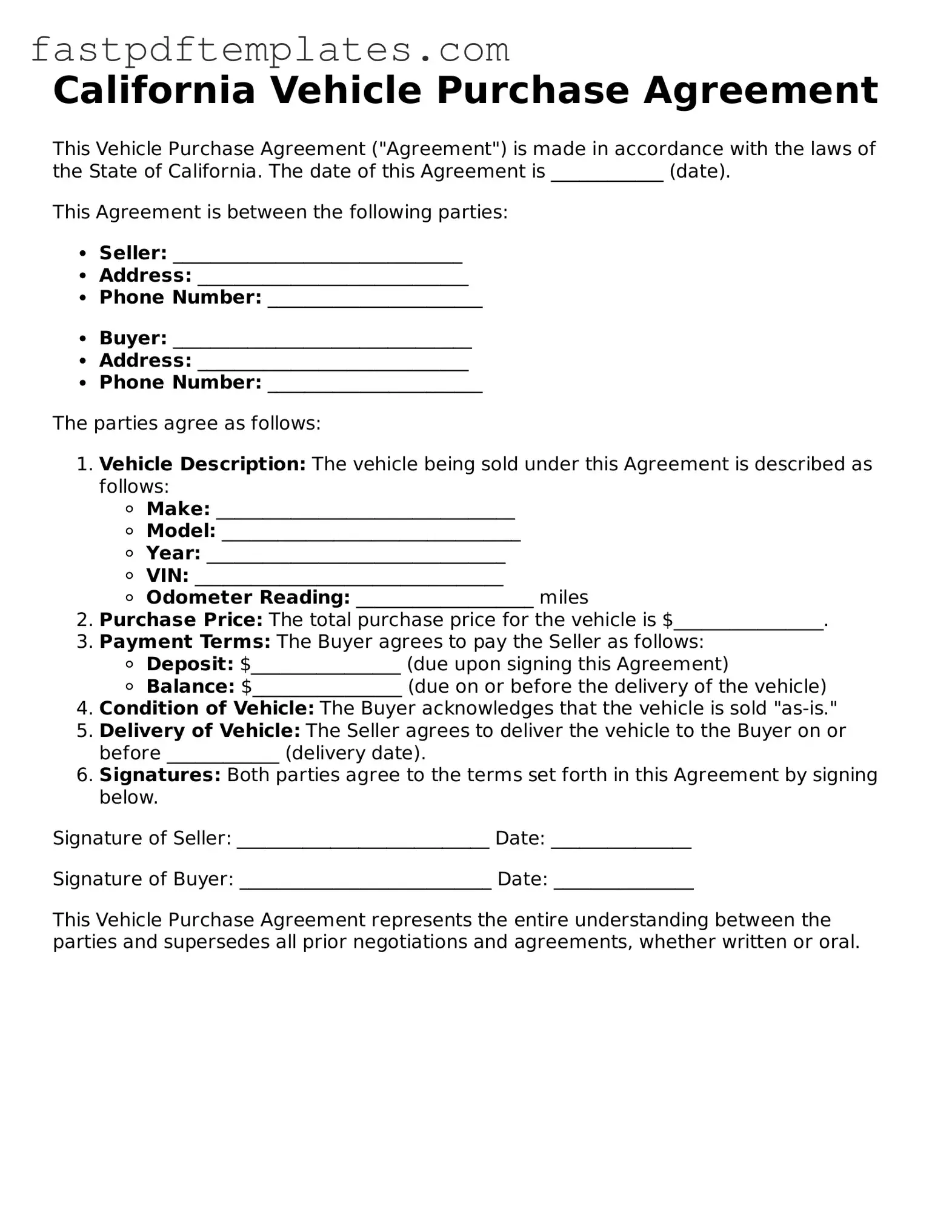The California Vehicle Purchase Agreement form shares similarities with the Bill of Sale. Both documents serve as proof of a transaction between a buyer and a seller. A Bill of Sale outlines the details of the vehicle being sold, such as its make, model, and VIN, and confirms the transfer of ownership. Like the Vehicle Purchase Agreement, it often includes the sale price and the date of the transaction, ensuring that both parties have a clear record of the sale.
Another document similar to the Vehicle Purchase Agreement is the Purchase Order. A Purchase Order is typically used in business transactions to indicate the intent to buy goods or services. In the context of vehicle sales, it specifies the details of the vehicle, the agreed price, and terms of payment. Both documents aim to formalize the agreement between the buyer and seller, providing clarity on what is being purchased.
The Lease Agreement is another relevant document. While it focuses on renting a vehicle rather than purchasing, it still outlines terms and conditions that govern the use of the vehicle. Like the Vehicle Purchase Agreement, it details responsibilities of both parties, payment amounts, and duration of the agreement. Both documents aim to protect the interests of the parties involved.
The Vehicle Title is also similar in purpose. It serves as a legal document that proves ownership of a vehicle. When a Vehicle Purchase Agreement is completed, the title is transferred from the seller to the buyer. Both documents are crucial for establishing who legally owns the vehicle and ensuring that the transaction is recorded properly.
The Odometer Disclosure Statement is another important document that relates to vehicle sales. This form is required by federal law and must be provided when a vehicle is sold. It discloses the vehicle's mileage at the time of sale, which is a key detail that buyers need to know. Similar to the Vehicle Purchase Agreement, it protects the buyer from potential fraud regarding the vehicle's history.
The Financing Agreement can also be compared to the Vehicle Purchase Agreement. When a buyer finances a vehicle, this document outlines the terms of the loan, including interest rates and payment schedules. It complements the Vehicle Purchase Agreement by detailing how the buyer will pay for the vehicle over time, ensuring that both parties understand their financial obligations.
The Warranty Agreement is another document that often accompanies vehicle purchases. This agreement outlines the terms of any warranties offered on the vehicle, such as what repairs are covered and for how long. Just like the Vehicle Purchase Agreement, it aims to protect the buyer's investment by providing assurances about the vehicle's condition and performance.
The Trade-In Agreement is also relevant in vehicle transactions. When a buyer trades in their old vehicle as part of the purchase, this document outlines the value of the trade-in and how it affects the overall price of the new vehicle. It works alongside the Vehicle Purchase Agreement to ensure that all aspects of the transaction are clearly documented.
Lastly, the Sales Contract is similar to the Vehicle Purchase Agreement in that it outlines the terms of a sale. This document includes information about the product being sold, the sale price, and any conditions that must be met. In vehicle sales, it serves to formalize the agreement and ensure both parties are clear on the terms of the sale, much like the Vehicle Purchase Agreement.
